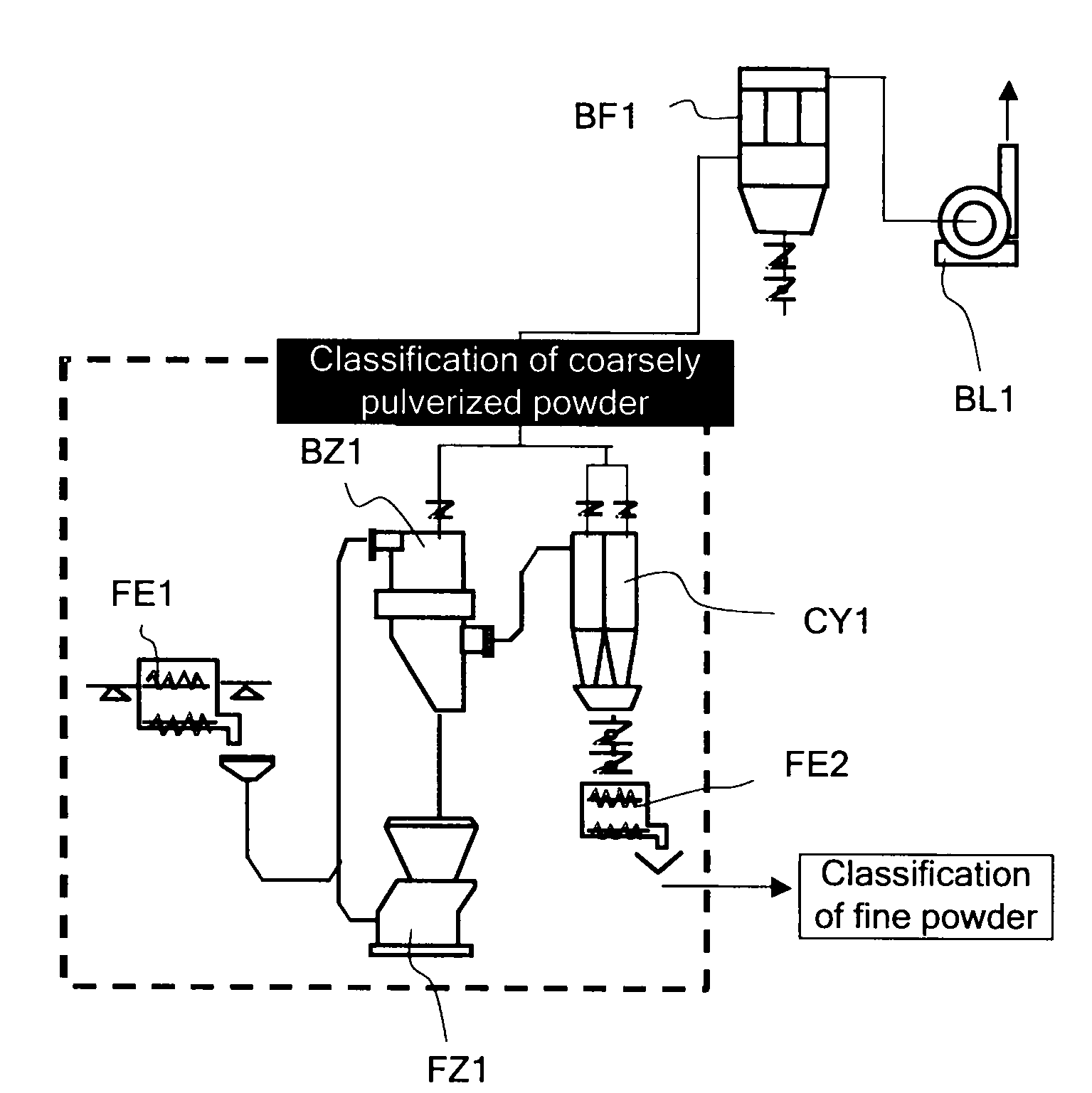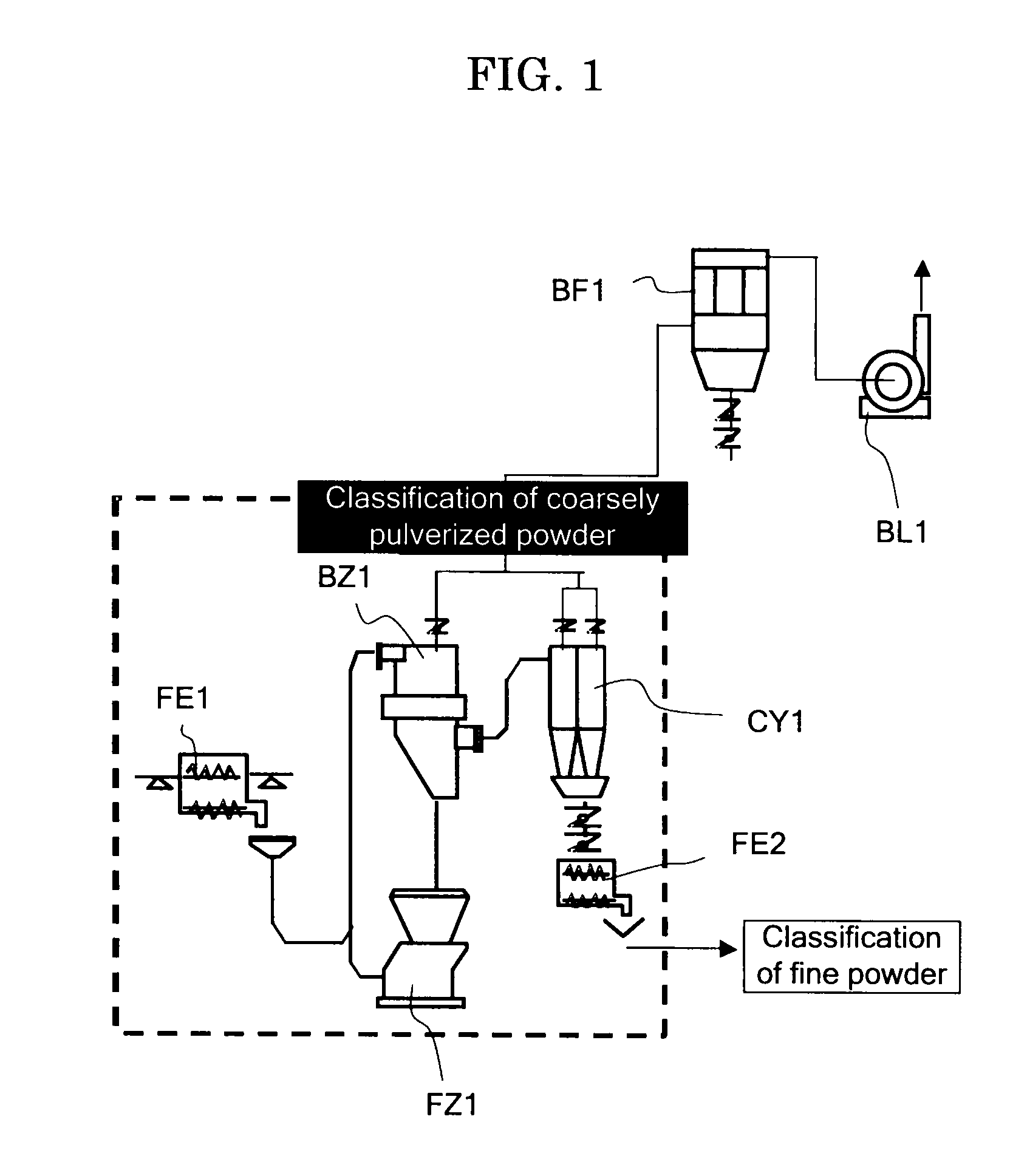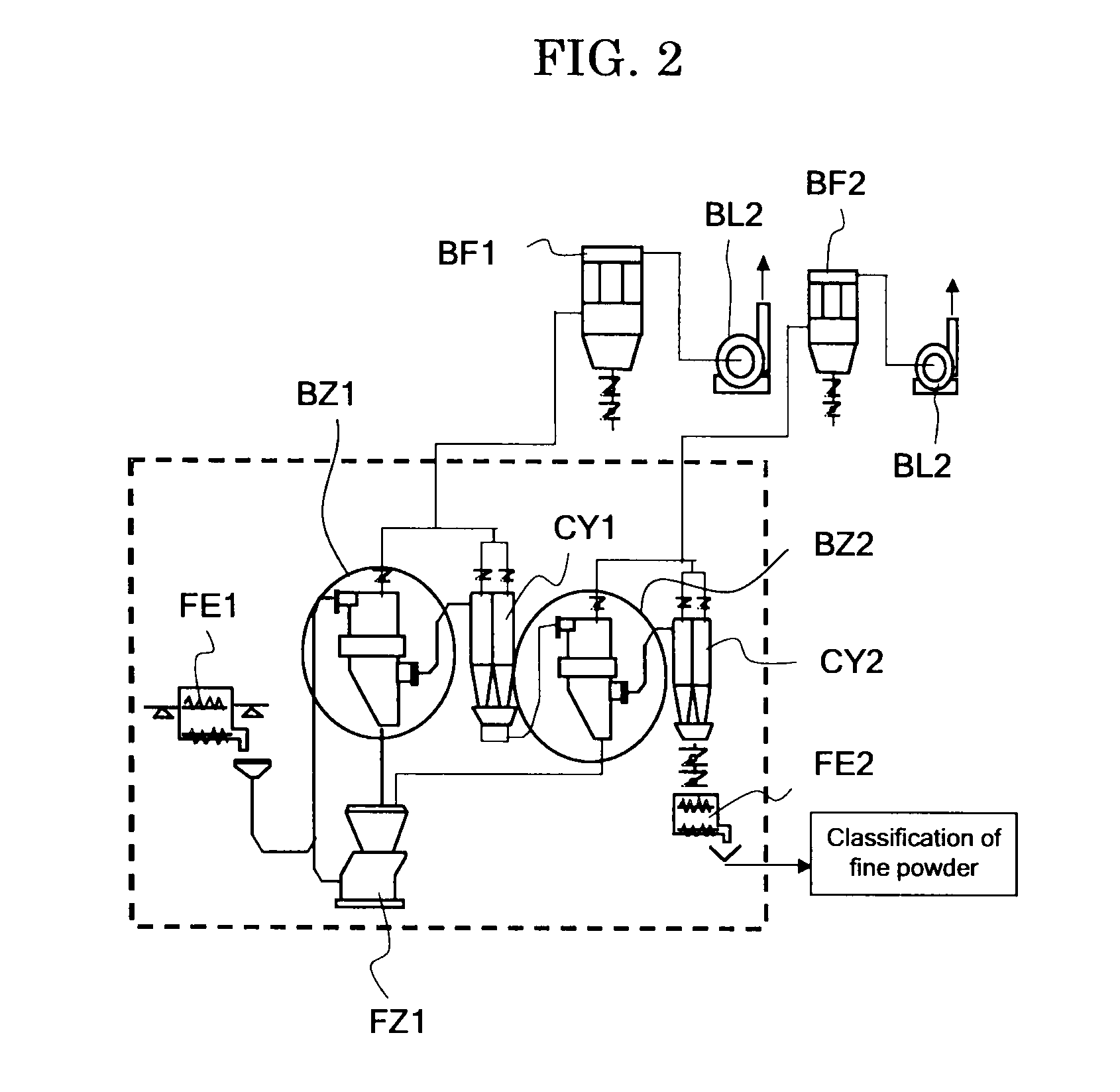Air classifier
- Summary
- Abstract
- Description
- Claims
- Application Information
AI Technical Summary
Benefits of technology
Problems solved by technology
Method used
Image
Examples
example 1
[0056]In the classification flow of coarsely pulverized powder shown in FIG. 2, an air classifier having the construction shown in FIGS. 5A and 5B was used as the air classifier BZ1 (the number N of the guide slats 1q of the louver ring 1Q=R / 30 (where R was the length (in mm) of the inner periphery of the casing of the dispersion chamber)) and an I-type mill pulverizer (manufactured by Nippon Pneumatic Mfg. Co., Ltd.) was used as the first pulverizer FZ1. A mixture of 75% by mass of a polyester resin, 10% by mass of a styrene-acryl copolymer resin and 15% by mass of carbon black was melted and kneaded in a roll mill. The mixture was then allowed to cool and solidified and the solidified mixture was coarsely pulverized in a hammer mill to form a raw toner material. This material was fed at a rate of 100 kg / hr in the classification flow to thereby yield a toner having a particle size distribution such that a weight average particle diameter was 4.5 μm, a fine particle (particle diamet...
example 2
[0058]In this example, the number N of the guide slats 1q of the louver ring 1Q of the classifier BZ1 was changed to R / 15 (where R was the length (in mm) of the inner periphery of the casing of the dispersion chamber)). Other than that, the same classification flow of coarsely pulverized powder as described in Example 1 was carried out using the same air classifier BZ1 having the construction shown in FIGS. 5A and 5B (but with a different number of the guide slats 1q) to pulverize the same raw toner material as that used in Example 1. Feeding the raw material at a rate of 100 kg / hr yielded a toner having a particle size distribution such that a weight average particle size was 4.5 μm, a fine particle (particle diameter: 5 μm or less) content was 75POP % based on the number average and a coarse particle (particle diameter: 8 μm or greater) content of 1.0% by volume based on the weight average.
example 3
[0059]In this example, an air classifier having the construction shown in FIG. 6 was used as the air classifier BZ1 (α1=85°; the opening area A1 of the fine powder discharge port 16a=1 / 12×A2 (where A2 is the opening area of the opening 7 of the separator core 8); the fine powder discharge pipe 15b did not extend upward from the apex of the center core 15; the length L of the fine powder discharge pipe 15b=1.8×D2 (where D2 is the diameter of the opening 7 of the separator core 8); the anti-flow distortion part 14 not provided). Other than that, the same classification flow of coarsely pulverized powder as described in Example 1 was carried out to pulverize the same raw toner material as that used in Example 1. Feeding the raw material at a rate of 100 kg / hr yielded a toner having a particle size distribution such that a weight average particle size was 4.6 μm, a fine particle (particle diameter: 5 μm or less) content was 82POP % on the number average and a coarse particle (particle d...
PUM
 Login to View More
Login to View More Abstract
Description
Claims
Application Information
 Login to View More
Login to View More - R&D
- Intellectual Property
- Life Sciences
- Materials
- Tech Scout
- Unparalleled Data Quality
- Higher Quality Content
- 60% Fewer Hallucinations
Browse by: Latest US Patents, China's latest patents, Technical Efficacy Thesaurus, Application Domain, Technology Topic, Popular Technical Reports.
© 2025 PatSnap. All rights reserved.Legal|Privacy policy|Modern Slavery Act Transparency Statement|Sitemap|About US| Contact US: help@patsnap.com



